10 days in Kosovo – Peja and the Rugova Valley
From Prizren to the Rugova Valley, passing Gjakova
Short Description. On my way from Prizren to Peja and the Rugova Valley, I stopped in the small town of Gjakova, then at the Visoki Dečani Monastery, where I had the opportunity to drink juice with NATO soldiers. In the afternoon, I went to Peja, where I strolled the bazaar and the tourist promenade.
Long Description
It was not easy to exit Prizren because the GPS had repeated errors. Eventually, I found the road to Peja – one of the three big cities of Kosovo. In the little town of Gjakova, I completely got lost without a map and the internet on my phone worked terribly. I parked near some tourist information panels and went to the big bazaar. The bazaar featured a Turkish style, with many shops, heaps of wedding dresses, piles of clothing, and the customary plastic stuff. Houses were pretty shabby but the pedestrian zone had animated pavement terraces for the youth. Shisha smoke smelled in the street and soft music played in the background. At the exit from the bazaar, I discovered the typical Balkan chaos – with fruits and vegetables sold mostly in the street and shops abounding with convenient offers.
From Gjakova I continued toward Peja and before arriving in town, I looked for the Visoki Dečani Monastery. This was one of the four monasteries in Kosovo listed as a UNESCO site for its unique interior frescoes (typical for the Balkan Middle Ages). The road was badly signaled though, and the GPS frequently sent me into the middle of nowhere. I gave up the GPS, activated my own mental navigation, and finally reached the good road. Near the monastery, I passed a KFOR barrier with an observation post. NATO soldiers who worked on week-long shifts guarded the monastery.
Due to some Serbian-Kosovan confrontations, the Visoki Dečani Monastery was the only Serbian monastery still guarded by NATO at the time of my visit. They checked my passport at the monastery’s gate and announced my visit by radio. I had a visitor pass and all the gates automatically opened when I approached them. In the courtyard of the monastery, KFOR soldiers from Italy, Slovenia, and Switzerland patrolled. A young boy took me on a guided tour of the church. The main dome was 28 m high on the inside and 32 m on the outside. Impeccable frescoes (apparently never restored) covered the interior of the 14th-century church. 20 monks from Serbia, Macedonia, Slovenia, and Montenegro lived there. They had 100 sheep, cows, and goats, and they produced their own cheese, wine, and honey, which could be bought at the monastery’s shop.
In the courtyard of the monastery, a soldier followed me as I was strolling around the church. I thought he had to guard me but surprisingly he invited me to have coffee with his NATO fellow colleagues (among which there was a woman too). I hesitated to pass a sign interdicting tourists, but „my” soldier allowed me to pass and we went up to the terrace of the monastery.
Adrian was a Swiss NATO soldier and he was visiting Kosovo for 10 days. He was tall, well-built, blond with blue eyes, and handsome as the trill of the snow-capped Alps. A monk brought us liqueur, which I refused, but Adrian immediately gulped it down. I served only water with lemonade and silently craved for that promised coffee (apparently served only to the soldiers). Adrian and his colleagues asked me a lot of questions about Romania and admired my courage to travel by myself. Eventually, Adrian suggested meeting in Pristina again. I answered evasively, the Swiss soldiers left, and I stayed to better listen to the monastery’s silence a little more.
In Peja I checked in at Hostel Sarac, then I had late lunch and walked several hours through the town’s center. The Turkish bazaar featured lots of gold and silver stores as well as many gypsy beggars. A little stream of water crossed the city center and next to it the central mosque with a glass porch sat imposingly. Unfortunately, I arrived too late and the cheese market had already closed. In the afternoon, I strolled the promenade lined with hotels toward the Rugova Valley, then I returned to the hostel. In the evening, I wrote in my journal until late at night and the owner of the hostel played guitar on the sofa in the lobby.
The first day on the Rugova Valley
Short description. I stopped at Peja’s Patriarchate, then drove up along the Rugova Valley. I hiked from Motel Te Liqeni to the Liqeni Madhe Lake. In the evening, I checked into a cozy bungalow at Gryka Motel.
Long Description
I left toward the Rugova Valley and on the outskirts of Peja, I stopped at the Patriarchate Complex – another medieval monastery in Kosovo, listed as a UNESCO World Heritage Site for its complex series of interior frescoes. When I entered the compound, I had to give my passport to the Kosovo police. Several nuns hurried to do their tasks through the tidy and neat monastery. An isolated belfry dominated the monastery’s courtyard. Some excavated ruins from the old church had been attentively restored and could be seen marked on the ground.
The enormous main church actually included two smaller churches which were built as an extension of the original, central one. Hundreds of frescoes covered the whole interior of the church. A largely walled portico (also covered with frescoes) connected the central church with the two other smaller ones. Two guards assiduously followed me because I wasn’t allowed to take photos anywhere (especially inside the church). In the monastery’s courtyard though, rules disappeared. The guards somehow relaxed and moved their attention to other visitors.
Close to the Patriarchate of Peja, I suddenly entered the Rugova Valley. It passed through high gorges, then the road snaked up toward the high mountains which surrounded the whole valley. I passed a short tunnel, then drove all the way to the end of the valley. At Kuqisthe, the road forked toward Te Liqeni or the Boge ski resort (deserted in summer). I chose the left fork of the road and carefully drove the tight bends that went through the forest up to the Te Liqeni Motel. There, I tried to find accommodation at the bungalows but failed to negotiate a decent price for one person.
From Te Liqeni Motel, I planned only a short hike to the Liqeni Madhe Lake (which meant „the large lake” – a Kosovan told me). The lake sat only 2 kilometers away in a glacial valley but the demanding footpath climbed moderately and constantly for at least one hour. I had left my trekking poles in the car so I had to use my calves at 100% of their capacity. I sweated a lot. Some Kosovars wanted me to guide them to the lake. I told them that I didn’t even speak their language but I had a good sense of orientation so they could come with me. Eventually, they hiked very slowly and we parted. It took me almost 50 minutes to get to the lake, beautifully sheltered in a small glacial trough somewhere on the border with Montenegro.
I sat near the lake for a while, then went back to the car at Te Liqeni Motel. I had to look for accommodation somewhere along the Rugova Valley. I drove up an abrupt road (well asphalted and with striations for adherence) to some bungalows in Kuqisthe village. The bungalows were under construction though, and the picturesque small village had only a few houses without accommodation. Therefore I planned to go down the valley toward the Rugova Camp but meanwhile found the neighboring Gryka Motel.
At Gryka Motel, I successfully negotiated a bungalow with Margrin – the chief waiter, and suddenly decided to spend two days there and explore the highland villages. My immense bungalow included a private bathroom and I could park the car right in front of the door. The motel’s restaurant sat on the river side, and Margrin served me a super-schnitzel, the specialty of the house.
The second day on the Rugova Valley
Short Description. I drove through several villages of the Rugova Valley – Drelaj and Koshutan. From Pecaj village, I walked to Reke e Allages hamlet.
Long Description
In the morning I planned a road trip through the villages of the Rugova Valley. First, I drove up to Drelaj village. I had to park the car on the right side of the road and abruptly hike an off-road to the village. The village featured scattered houses and a mosque in the middle of the pastures. Some cows crossed my way and villagers looked at me very surprised. Back to the car, I continued my drive through some narrow gorges up to Koshutan village. This village had even more scattered houses than the previous one. The asphalted road went up to a path from where I could see countless other villages, inaccessible by car though. All pasture lands were interspersed with houses and cart roads. High mountains rose in the background. Horses freely gamboled.
I drove down from the mountain path and came back to the main road. At a crossroads, I chose to go toward Pecaj village. I drove up until the asphalt road ended and then I persisted on driving up a very abrupt dirt road. I couldn’t drove up any further though, so I parked in a small flat place at the middle of the road and continued to explore the surroundings on foot. I hiked along a valley and tried to reach the alpine pastures.
For about one hour, I hiked a dirt road along a water stream and reached the Reke e Allages hamlet. The hamlet had lots of lodges for those who trekked Via Dinarica or the Peaks of the Balkans trail. The lodges were ugly modern wooden villas, with simple squared volumes. They were however rather scattered in the mountain scenery and somehow harmonized within nature. No living souls around, just a lost pigeon, and some cows.
I returned to my car and came back to my bungalow at Motel Gryka. I had sirloin with cheese and sour cream while Margrin put some traditional music with oriental influences.
From Prizren to Pristina – through Peja and the Rugova Valley is the second diary from a 10-day road trip to Kosovo. Its continuation, the last post from Kosovo can be found at Pristina – a few days in Kosovo’s capital. And here are all my Travel Diaries from Kosovo, the Balkan Countries (x3).
Have you been to Kosovo or plan to go there? Leave a comment below this post and tell me what you liked about Kosovo or what you’re interested to see there.
Want to subscribe to my travel diaries? Just leave your email in the subscription form below and you’ll be notified when I publish a new travel diary.
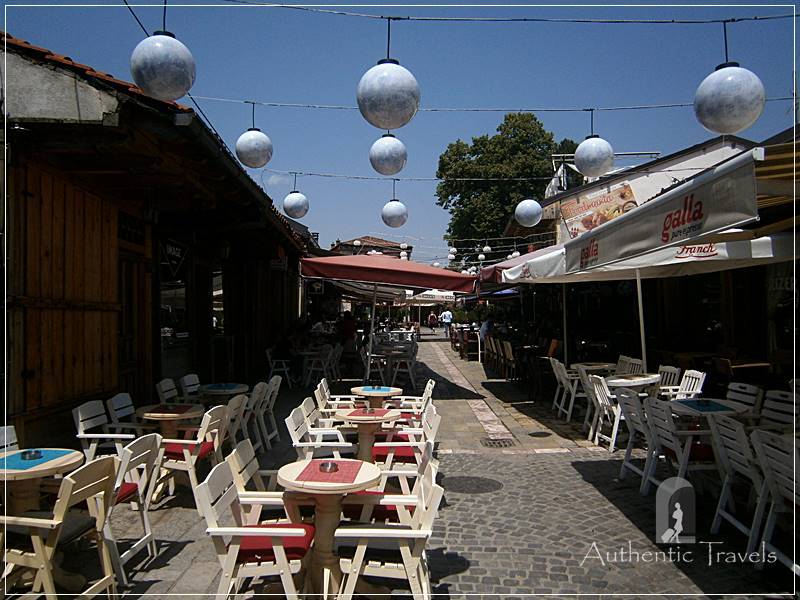
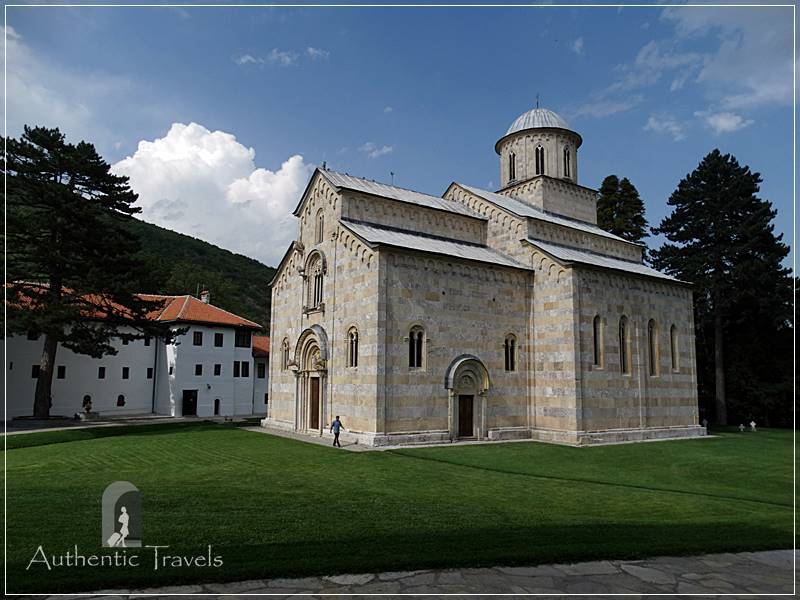
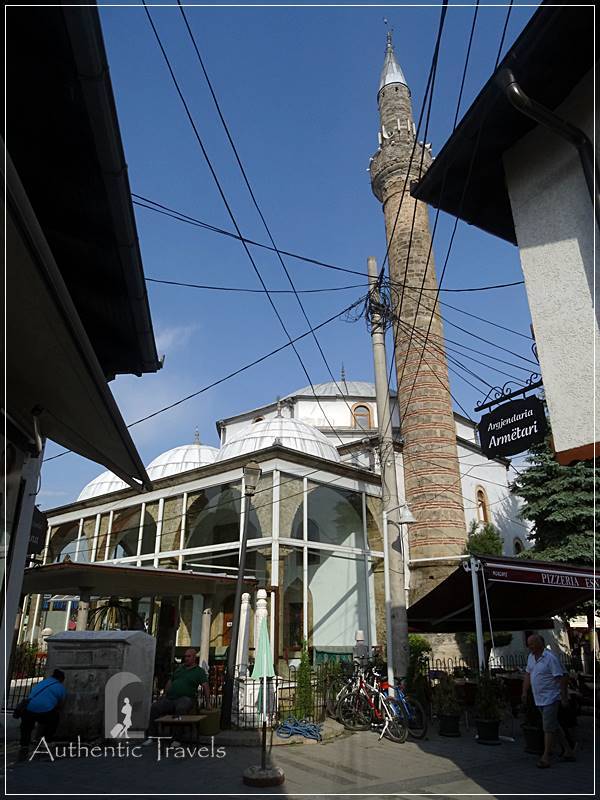
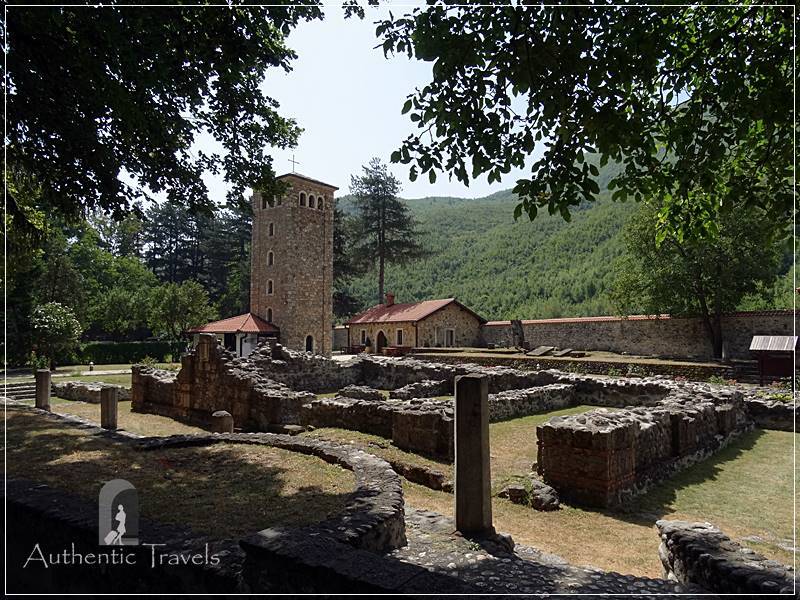
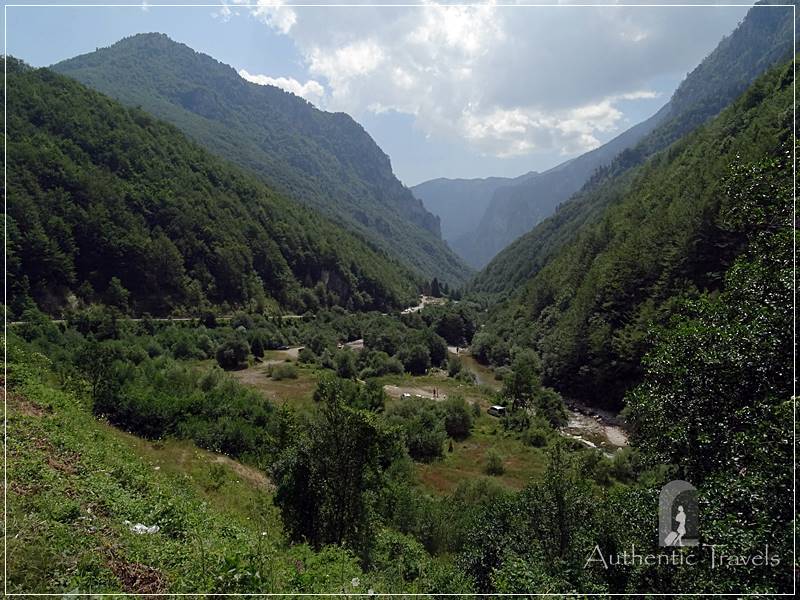
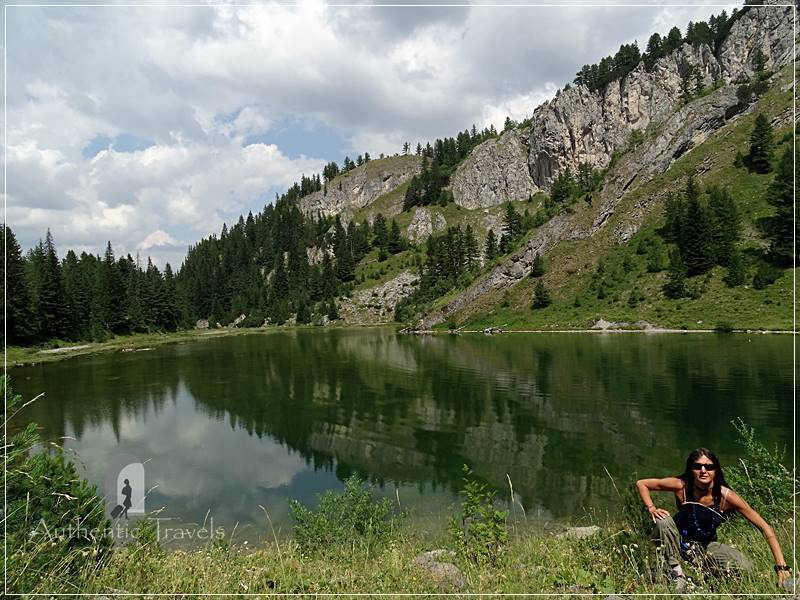
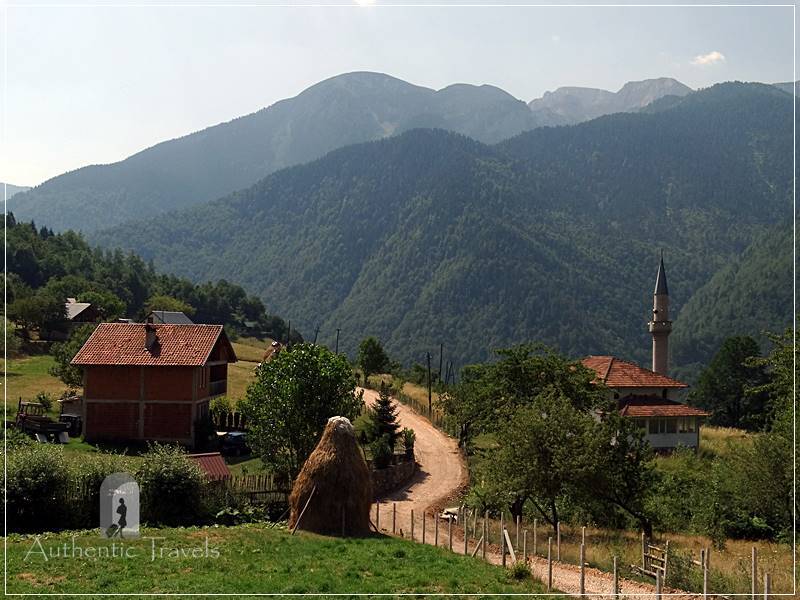
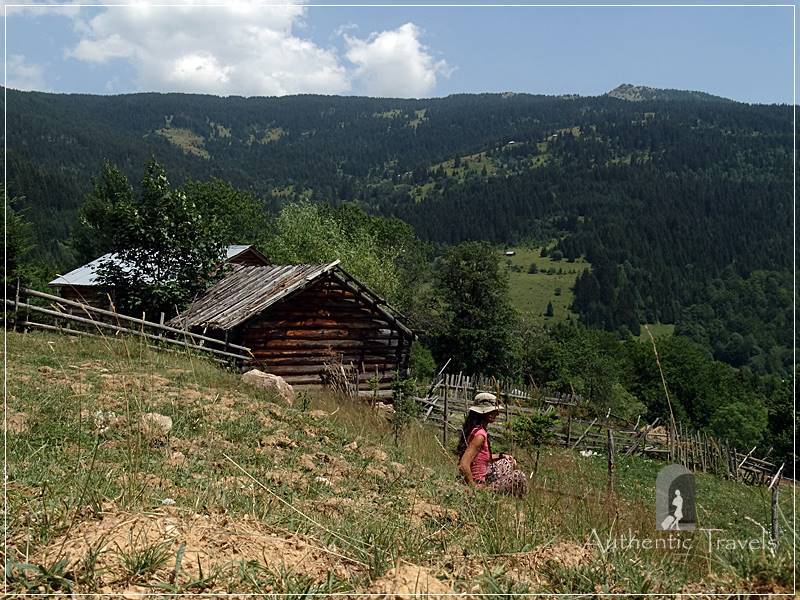
I can imagine that feeling of being lost without a map. We have a great offline map app that we use to help us when we travel. And it seems to cover everywhere. How strange that the Visoki Decani Monastery required your passport to enter. We only had that happen once when we were in Japan and needed a passport to get into a tour of royal residence grounds. I love the mix of small towns and countryside you saw as you travelled around Kosovo. Such stunning scenery.
The Visoki Decani Monastery is an Orthodox enclave in a Muslim territory. It is also a UNESCO site, so now you can understand why it was all this NATO guarding. There was war 20-something years ago especially between Kosovans (who are Muslims) and Serbians (who are Orthodox).
It sounds like a great place to get outdoors as you did. I love taking walks and hikes when I travel for a bit solitude – even if accompanied by a lost pigeon. Lol. I also like how you structure your posts with a short story and then a longer synopsis. It’s a smart way to do it!
Tnak you Jennifer. i don’t know how I came up with this idea of short description + long description. Maybe it is because I write travel journals and not round-ups, I guess.
It can be so hard to know where you are without GPS, a phone or a map. I guess that is when the best adventures happen! That would make me a little nervous to have a solider following me, but that is such a cool story that he invited you for coffee and you got to go where tourists usually don’t go. Liqeni Madhe Lake sounds like it was a difficult walk to reach, but a beautiful place once you made it.
That NATO soldier was so handsome that I enjoyed a lot being followed. The lake was very beautiful, somewhere exactly on the border between Kosovo and Macedonia.
It is your next article which I read with great interest. Because you described so detailed the region which I don’t know very well and which I would like to visit as part of a road trip. So, I will use your tips when I decide on my next road trip. Rugova Valley and Gorges looks beautiful. I love this nature. I would like to hike there. Drelaj village is so picturesque that I add it to my list.
Rugova Valley has some amazing villages where, pay attention, you cannot reach them on foot. To some of them you have to hike, but there’s no danger of getting lost.
What an amazing trip through the Balkans. Kosovo is one of the many places I would love to visit especially for the UNESCO-listed monasteries. I loved reading through post and virtually exploring the Decan Monastery. The Rugova Valley looks stunning too. Would love to travel these roads sometime.
Yes, those UNESCO listed monasteries have a very interesting history. In a land of mosques and Muslims, those Orthodox monasteries have to survive and this is the main reason they are protected by UNESCO.
So cool! I love all the architecture you got to see while traveling through Kosovo! I want to visit Peja old town with the Patriarchate of Peć and the Decan Monastery. Your trip looks like it was amazing!
I liked the Rugova valley a lot too. It is amazing how you find small parts of the world in such remote places.
I love reading your articles on some unique places in Balkans. The town of Gjakova near Rugova Valley: with the main pedestrian street with pavement cafes looks very rustic and beautiful town. I am totally sold out for Liqeni Madhe Lake which is on the border with Montenegro. Drelaj village truly is a splendid and visiting all these offbeat places must be very interesting and fun instead of over crowded touristic places.
Gjakova was recommended to me by my hosts in Prizren. I am happy I stopped there because it was not touristic at all.
Oh my! Its in these places we wish we were less dependent of gadgets and more on the actual physical maps like our earlier generation! Its indeed tough when the internet connectivity and gps both are miserable!
Wow, Visoki Dečani Monastery looks fascinating. Its crazy how much of security is here! I would be a bit petrified to be followed around by an armed NATO guard! But good to know they were friendly and even invited you for a tea!
Rugova valley looks gorgeous. I always love these places in the borders where you are in 2 countries at the same time!
Kosovo was an interesting experience for me, even though the conflicts are still present there.
We did a 14 day road trip through the Balkans a couple of years ago, but didn’t make it to Kosovo. Seeing how beautiful it it, I’m kind of sorry now. Especially for these UNESCO monasteries. It’s interesting that you were asked for your passport in order to be allowed to visit the Patriarchate Complex. It may be because of the old frescos. As for the GPS, apparently it doesn’t work very well in this part of the world. We went round and round for hours to find our hotel in Bosnia.
No, they asked for my passport because Kosovo was a land of war between religious communities (Christian vs Muslims). Serbia still doesn’t admit Kosovo’s independence. This is also why those monasteries are listed as UNESCO sites (to be internationally protected).